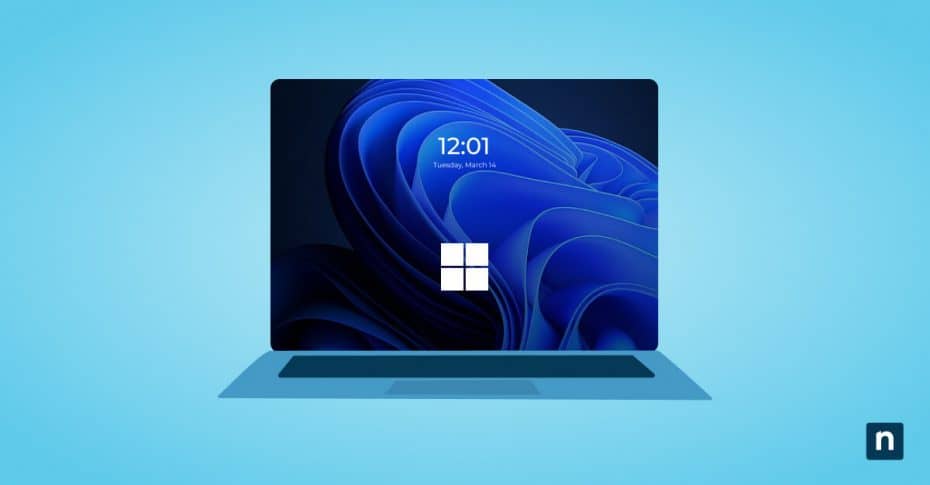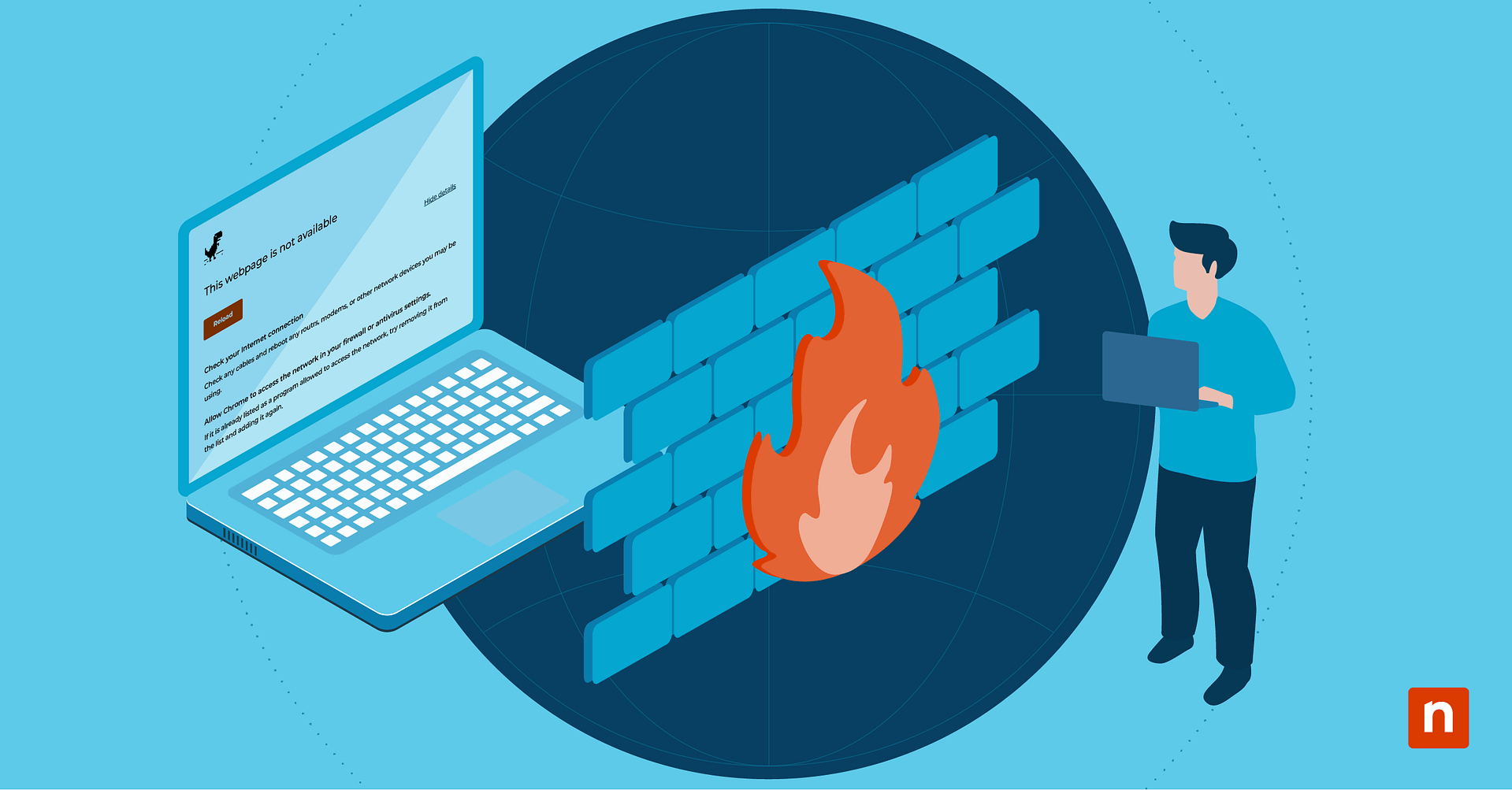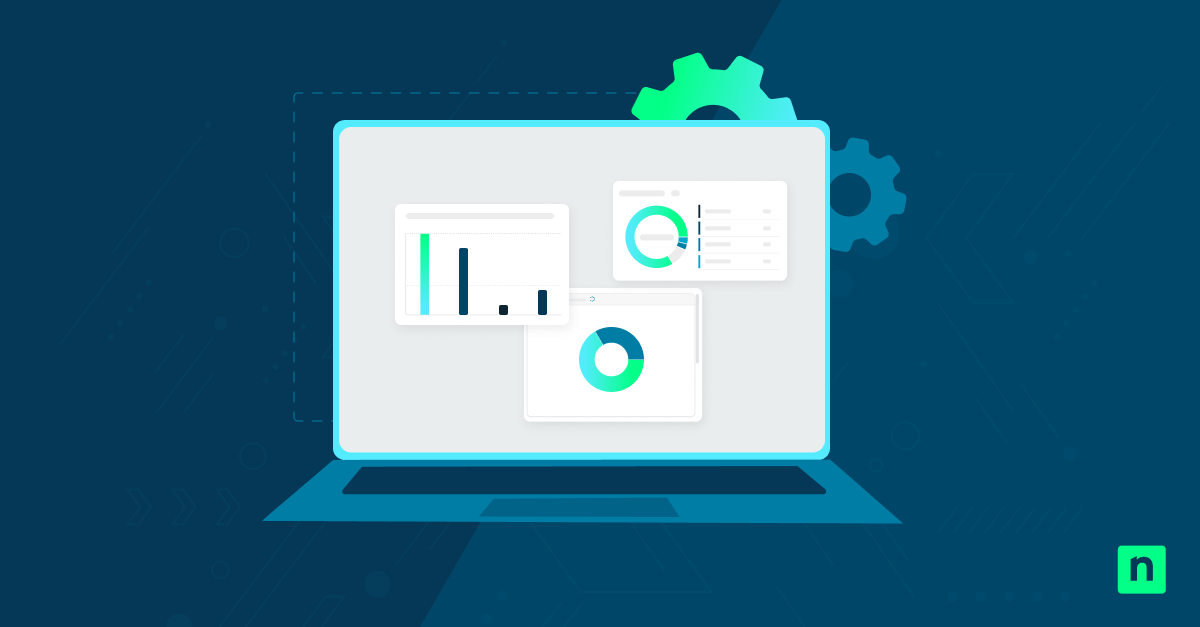In this guide, you’ll learn how to upgrade from Windows 10 to 11. It’s an important update for most Windows computers, and something that IT administrators will want to stay on top of while managing their organization’s devices.
Windows 11 came out in 2021, replacing Windows 10 and providing users with a host of powerful new features to improve their experiences. However, Windows 10 was not left behind. It still receives support and updates from Microsoft, and users are still free to use it without having to worry about significant bugs or security risks.
But, on October 14, 2025, that’s going to come to an end. Microsoft will no longer be providing support or updates after that date. Because of this, Windows 10 will become more and more vulnerable to security risks and technical problems as time goes on. So, it’s important to make the transition from Windows 10 to 11 as soon as possible to avoid these issues.
How to upgrade from Windows 10 to Windows 11
Before initiating the upgrade
- Go to Microsoft’s PC Health Check tool to make sure that your computer is compatible with Windows 11.
- Back up all your data to prevent any potential data loss while updating.
- Update Windows 10. Having the latest Windows 10 updates installed before upgrading to Windows 11 will make the process smoother and easier.
You can find a few other key things to consider in this section.
Upgrade methods
There are several ways you can upgrade from Windows 10 to Windows 11, and each option will depend on your own organization’s needs and goals.
Installing the updates manually through the settings for each computer is the most straightforward method and will work best if you’re only managing a few computers. On the other hand, if you’re working with multiple devices, you might want to deploy a script to update each computer all at once, saving you time and resources.
Method 1: Upgrade via Windows Update (GUI)
This is the easiest and most straightforward method. It will work best if you’re only managing a few devices or are guiding individual users through the upgrade process.
- Open the Start Menu > Settings > Update & Security > Windows Update.
- Click Check for updates.
- If your device is eligible, you’ll see a message that says Windows 11 is ready to be installed.
- Select Download and Install, and follow the on-screen prompts.
- The update should start automatically now. Depending on your Internet speed, hardware, and storage capabilities, it can take anywhere from 20 minutes to several hours. The device will also reboot several times throughout the process.
Method 2: Upgrade using Command Prompt (CMD)
If you’re working with a lot of devices, deploying a script and automating the entire process through Command Prompt is your best and most efficient option.
- Download the Windows 11 ISO file from the official Microsoft website and copy its contents to your computer. Click here for a guide on how to do that.
- Open the Start Menu, search for Command Prompt > Right-click > Run as administrator.
- Input the file path to setup.exe in the folder in your computer with the contents of the ISO file.
Here’s a sample file path: C:\Windows11\setup.exe - You can add any of the following commands after the file path:
- /auto upgrade – Will perform an automatic upgrade
- /quiet – Will suppress user interactions
- /noreboot – Will prevent automatic reboot after installation
- Press Enter. This will launch the Windows 11 installation window.
Method 3: Upgrade using PowerShell
If you don’t want to use Command Prompt, you can use this script on PowerShell instead. It will work best in situations where you need to update a lot of computers at once through an automated script.
- Download the ISO file from the Microsoft website.
- Open the Start Menu, search for Windows PowerShell, right-click the program, and select Run as administrator.
- Input the following script:
$ISOPath = “C:\Path\To\Windows11.iso” Mount-DiskImage -ImagePath $ISOPath
$DriveLetter = (Get-DiskImage -ImagePath $ISOPath | Get-Volume).DriveLetter
Start-Process “$DriveLetter`:\setup.exe” -ArgumentList “/auto upgrade /quiet /noreboot” -Wait
Dismount-DiskImage -ImagePath $ISOPath
⚠️ Note: Replace C:\Path\To\Windows11.iso in the script with the path to the Windows 11 ISO file you’re updating.
- This will install Windows 11 on your computer. Follow the prompt boxes to proceed.
Method 4: Upgrade via Group Policy (GPO)
This method will automatically ensure that the device meets the necessary hardware requirements and that the updates are approved by WSUS before downloading and installing.
- Open the Start Menu, search for Edit group policy, and open the program.
- Navigate to Computer Configuration > Administrative Templates > Windows Components > Windows Update > Windows Update for Business
- Configure the following policies:
- Select the target Feature Update version – Set that to Windows 11.
- Select when Preview Builds and Feature Updates are received – You can set a deferral period there if you need it.
Key considerations before upgrading from Windows 10 to 11
Before you start the update, here’s a more comprehensive guide on the things you have to consider and take into account:
System requirements
To run Windows 11, your computer is going to need the following:
- 1GHz with 2 or more cores on a compatible 64-bit processor
- At least 4GB of RAM.
- A device with at least 64GB of storage
- Trusted Platform Module (TPM) version 2.0
- A graphics card that’s compatible with DirectX 12 or later with WDDM 2.0 driver
- A high definition (720p) display that is greater than 9” diagonally, 8 bits per color channel.
- Secure boot is enabled. To check if it is, see this guide.
- Both Windows 11 Pro and Windows 11 Home will also require an Internet connection and a Microsoft account during the initial setup.
Data preservation
When updating your computer, look into ways to back up your data to make sure you retain personal files and installed programs after the upgrade process.
You can also consider a clean install. This is the best option if you want to reset everything in a computer and have a fresh start with the device.
Further considerations for a Windows 10 to Windows 11 upgrade
- Before you install Windows 11, make sure that your Windows 10 license is valid since it will carry over.
- After installing Windows 11, you’ll have 10 days to revert it back to Windows 10. Once that’s passed, the change will be permanent.
- If you’re using third-party applications, verify that they’re compatible with Windows 11 first.
Downloading, mounting, and managing the Windows 11 ISO file
- Go to the official Microsoft website.
- Scroll down to Download Windows 11 Disk Image (ISO) for x64 devices, select the version of Windows 11 you want to install from the dropdown menu, and click Download Now.
- Choose the product language you want, and click Confirm.
- Under Download – Windows 11 [Language], click 64-bit Download.
- The download should initialize now.
- Double-click the ISO file to mount it. This will give you access to the files within the ISO.
- Copy all the files into a separate folder on the computer.
- Find setup.exe, and take note of the file path.
Making the smooth transition from Windows 10 to 11
There are many different methods for upgrading from Windows 10 to 11, and which option you use is going to depend on your needs and goals. If you want something easy and straightforward, you can use the Settings menu. And if you’re managing multiple devices, it might be best to use automated scripting through Command Line or PowerShell to make the task faster and more efficient.
However, before starting, it’s critical that you back up your data first and make sure that your hardware is compatible with Windows 11. This will help prevent you from running into problems and issues during the upgrading process.







